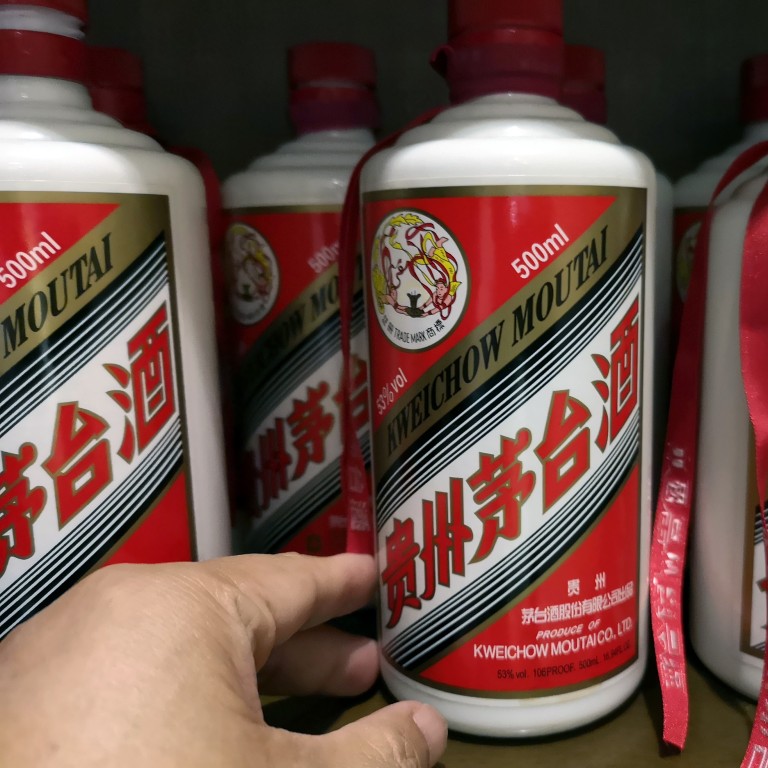
As Kweichow Moutai’s huge run-up leaves investors giddy, sobering signs suggest the party could be coming to an end
- Kweichow Moutai’s rapid run-up takes the stock to the biggest-ever premium to the price target set by analysts
- US research firm Morningstar says the stock is richly valued and sets a price target that implies a 34 per cent drop from the current level
Is “last call” coming for the big run-up in the share price of Kweichow Moutai, the fiery Chinese liquor maker that has soared 43 per cent in less than three months?
The stock is trading at its widest margin ever above the consensus price target of analysts tracked by Bloomberg. One yardstick – the price-to-earnings ratio – shows its valuation has topped a level that is seen as a historical warning over the past decade that a run-up is poised for a pause.
Morningstar argues that the shares are already overvalued because of unsustainable profit growth amid the economic downturn, while JPMorgan Chase says that the valuation will be underpinned by the prospect of price increases and the expansion of the company’s direct sales network.
Kweichow Moutai rose 1.2 per cent to a record high of 1,425 yuan on Friday, compared with the 12-month consensus price target of 1,389.03 yuan by Bloomberg-tracked analysts. The gap between the two was the widest-ever on June 1, implying that the stock exceeded the analysts’ price target by the most on record. The stock trades slightly above 35 times estimated earnings, a level that Kweichow Moutai has never beaten over the past decade.
“The company’s current valuation has fully priced in the positive mix effect of the channel reform (increasing direct-to-customer sales mix),” said Allen Cheng, an analyst at Morningstar in Singapore. “The market is also pricing in a sharp rebound, which we think may not happen due to impending economic slowdown, which would result in downside risk.”
One ominous sign of Kweichow Moutai’s profitability was a 50 per cent decline in the advance payment from customers in the first quarter from the end of 2019, reflecting a less optimistic outlook among dealers that are more hesitant to hoard shipments than before, Cheng said.
The analyst is the most bearish on the Chinese liquor producer among the 44 tracked by Bloomberg, setting a price target of 940 yuan.
First-quarter profit for Kweichow Moutai increased 17 per cent from a year earlier, lagging major rivals Wuliangye Yibin and Shanxi Xinghuacun Fen Wine Factory. Still, the growth rate beat a 9 per cent increase for the liquor sector and an average 42 per cent decline in the mainland Chinese-traded companies in the same period.
While Kweichow Moutai retains a strong brand among consumers for representing China’s unique baijiu culture, the giant is facing headwinds such as a change of drinking habits among younger drinkers and increasing competition in the industry. With rising health awareness, the shift to drinks that are lighter in flavour and contain less alcohol seems to be gaining traction. Tsingtao Brewery, China’s biggest beer maker, also rose to an all-time high this month in Shanghai on anticipation of more consumption of the beer.
Still, that has not shaken foreign investors’ confidence in Kweichow Moutai. They have remained as active buyers of the stock since April, when China’s lockdown to contain the pandemic began to ease. They have bought combined 7.4 billion yuan (US$1 billion) of the stocks over the past two months through the exchange link programme with Hong Kong.
The buying has lifted its market cap to 1.79 trillion yuan, falling short of Industrial and Commercial Bank of China that is the most valuable company on the Shanghai Stock Exchange by less than 2 per cent.

Kweichow Moutai’s overhauling of its sales networks through weeding out unqualified distributors and increasing direct sales since 2018 will be a potential catalyst for share prices, according to JPMorgan.
“If Moutai proves it is able to redefine a clean and healthy distribution relationship and eventually take back the enormous chunk of profits from distributors, we believe it would effectively translate into stronger earnings growth and trigger a valuation multiple re-rating,” said Kevin Yin, an analyst at the US bank. “Moutai’s superior profitability, fundamental stability, and prospect of direct sales warrant a valuation premium.”
The view was echoed by Zhongtai Securities, which says Kweichow Moutai’s valuation can hold up well above 35 times earnings amid improving better corporate governance and a decline in risk-free interest rates.
Kweichow Moutai is a sure bet for investors amid the uncertain economic outlook that is still clouded by a possible resurgence of the pandemic, as the company has ample room to raise ex-factory prices, according to Shenwan Hongyuan Group. Its flagship product Flying Mao-tai, with a 53 per cent alcohol content, is sold to primary distributors at less than 1,000 yuan, while the retail price tag for each bottle is around 2,500 yuan, the brokerage said.
Still, Kweichow Moutai will struggle to keep the profit margins this year, as the company is under pressure to increase marketing expenses to promote sales, according to Cheng with Morningstar. While sales of its upscale flagship liquor increased 14 per cent in the first quarter, most of the purchases were completed before the outbreak of Covid-19 at the end of January, he said. Sales of the company’s low-end products grew only 1.7 per cent in period.
“This beat is not sustainable, because we expect the company to increase its operating expenses going forward in accordance with its original plan, given that the sales growth of midrange liquor was lower than we had expected,” Cheng said.

